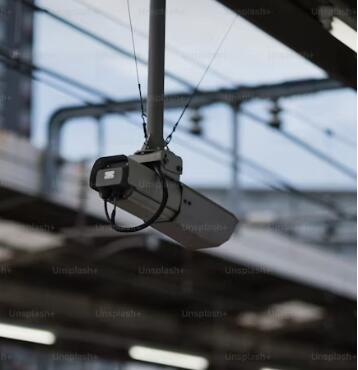Enhancing Disaster Response and Management: The Vital Importance of Surveillance
2024-03-05
Introduction:
Surveillance is a critical component of disaster response and management, providing invaluable insights and real-time data to aid in decision-making and resource allocation. From early detection and monitoring to post-disaster assessment, surveillance technologies play a pivotal role in enhancing preparedness and response efforts. In this blog post, we'll delve into the multifaceted role of surveillance in disaster management and explore its significance in mitigating the impact of natural and man-made disasters.
Early Detection and Monitoring:
Surveillance systems enable early detection and monitoring of potential disaster events, allowing authorities to take proactive measures to minimize risk and ensure public safety. Advanced technologies such as remote sensing, satellite imagery, and weather monitoring systems provide crucial data on environmental conditions, enabling forecasters to predict severe weather phenomena like hurricanes, tornadoes, and floods with greater accuracy. By continuously monitoring key parameters such as temperature, humidity, and atmospheric pressure, surveillance systems can provide early warnings and alerts to communities at risk, enabling timely evacuation and preparation efforts.
Response Coordination and Resource Allocation:
During a disaster event, surveillance plays a vital role in coordinating response efforts and allocating resources effectively. Real-time data from surveillance cameras, drones, and other monitoring devices provide situational awareness to emergency responders, allowing them to assess the extent of damage, identify areas of critical need, and prioritize rescue and relief operations. By tracking the movement of people, vehicles, and assets in affected areas, surveillance systems enable authorities to deploy resources strategically and coordinate response activities across multiple agencies and organizations. This coordinated approach helps streamline rescue efforts, reduce response times, and optimize the use of limited resources in the aftermath of a disaster.
Public Safety and Security:
Surveillance technologies enhance public safety and security during disaster events by providing continuous monitoring of critical infrastructure, transportation networks, and public spaces. Closed-circuit television (CCTV) cameras, traffic cameras, and security cameras enable authorities to monitor evacuation routes, identify potential bottlenecks or hazards, and ensure the orderly flow of traffic during mass evacuations. In addition, surveillance systems can deter looting, vandalism, and other criminal activities in disaster-affected areas, enhancing the security and well-being of residents and responders alike.
Post-Disaster Assessment and Recovery:
After a disaster event has occurred, surveillance technologies play a crucial role in conducting damage assessment, evaluating the effectiveness of response efforts, and facilitating the recovery and rebuilding process. Aerial surveys, satellite imagery, and unmanned aerial vehicles (UAVs) provide high-resolution images and geospatial data of affected areas, enabling authorities to assess the extent of damage to infrastructure, property, and natural resources. This information is invaluable for prioritizing reconstruction projects, securing funding assistance, and developing long-term mitigation strategies to reduce the risk of future disasters.
Conclusion:
Surveillance is an indispensable tool in disaster response and management, providing critical data and situational awareness to inform decision-making and enhance preparedness, response, and recovery efforts. By leveraging advanced surveillance technologies and data analytics, authorities can improve the effectiveness and efficiency of disaster management strategies, ultimately reducing the impact of disasters on communities and saving lives. As the threat of natural and man-made disasters continues to evolve, investing in robust surveillance systems and capabilities is essential to building resilient and adaptive communities capable of responding effectively to emerging challenges.



